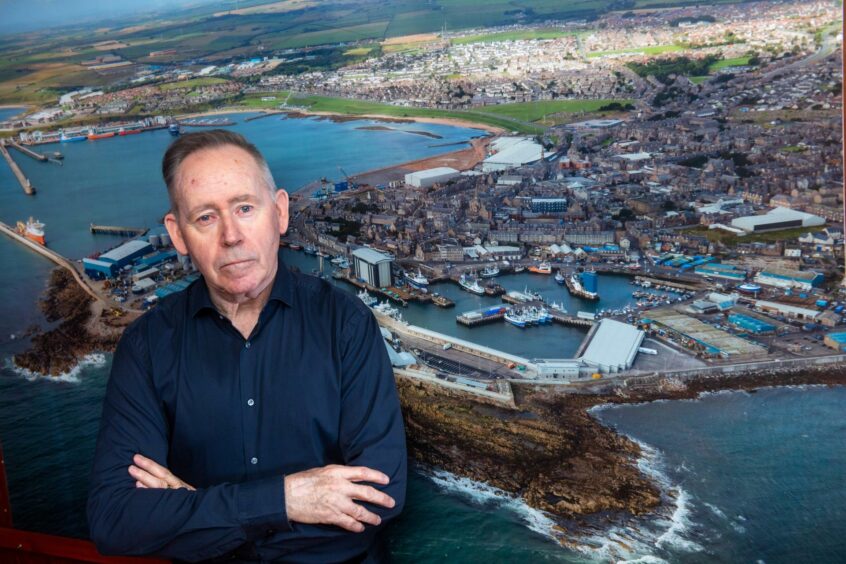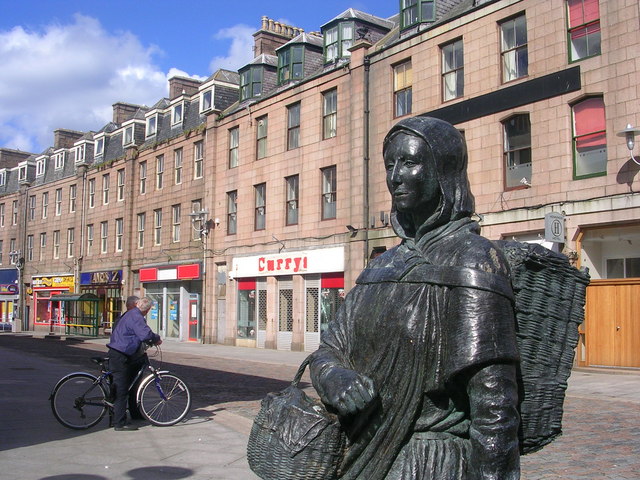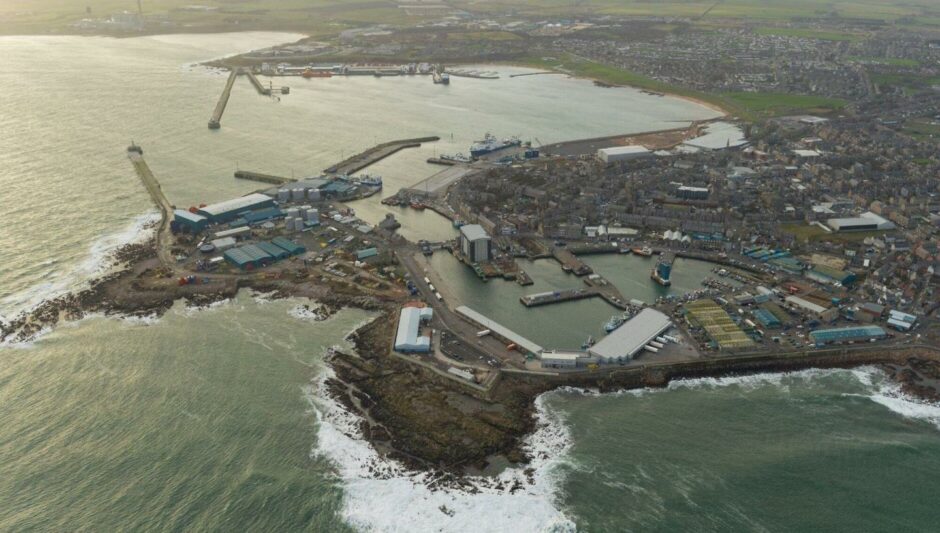
Fishing has been the lifeblood of Peterhead for 400 years and that’s not about to change any time soon.
But the area’s “narrative is changing”, according to port bosses, as the town of just 19,000 people gears up for an energy transition boom.
“Fishing is definitely our heritage, it’s very much part of our future,” said chief executive Simon Brebner, “but as we progress with the energy transition, these are the new areas we need to invest in and secure the future”.
Carbon capture, utilisation and storage (CCUS) is number one on the agenda for the port authority.
The Acorn Project, at nearby St Fergus, is a key CCUS scheme which leads the wider “Scottish Cluster”, aimed at decarbonising heavy industrial areas like Ineos Grangemouth and help deliver Scotland’s 2045 net zero goals.
At its peak, Acorn will support 20,600 jobs in 2031, and average more than 15,000 jobs annually to 2050, according to developer Storegga.
Peterhead Port will play an integral role in scaling up that project, shipping emissions in from other parts of the UK and Europe, to be stored in depleted gas fields in the North Sea.
To do that, Peterhead is going to have to upgrade its 50-year-old oil tanker jetty.
“Last week (wk starting March 21) we spent a full week on the tanker jetty with some of our consultants and engineers looking at how we need to repurpose it,” said Brebner.
“(Moving from) 50 years of oil and gas use to the next 30-40 years of CCUS and CO2 bulk imports – what does that jetty need to have done to it to enable that to happen for the next 20-30 years?”
Peterhead Port and Storegga have commissioned a study to answer that investment question, with findings due at the end of April.
“It’s going to be a good couple of millions, but that’s not something that comes as a surprise to us,” Brebner said.
As chief financial officer Stephen Paterson put it: “It’s a £40m quayside which, with a few million spent on it, is back good as new, if you like.”
Linked to Acorn is a scheme to equip Peterhead Power Station with carbon capture technology, with a planning application submitted last week.
Carbon capture, which might still seem a new term to much of the UK public, is a familiar phrase for the north-east port town.
In 2007, a £500 million venture led by BP to create the world’s first carbon capture and storage plant at Peterhead was scrapped due to government support being too slow.
In 2015, a Shell-led project was in the final two of a £1bn government competition which David Cameron’s government scrapped after £100m had been spent on it.
Last year, the Scottish Cluster missed out on selection for a share of a £1bn government fund to scale up the first two CCUS projects in the UK, instead being set as a reserve project.
Funding for the next phase, “Track 2”, is expected this year, with hopes high for Acorn, but is there any cynicism around the carbon capture catch which keeps swimming away?
“I think things are different this time around,” said Paterson, who has worked at the port for more than 25 years.
“Previously we were trailblazing, if you like. The Shell and the BP projects for Peterhead were well ahead of their time, they were visionary and, had they happened, they would have put the UK at the forefront of CCUS globally.
“What’s changed now is things are all aligned; you’ve got the legal commitments on net zero, you’ve got government policy and the technology itself moving forward.”
Brebner added: “CCUS is not a case of ‘is it going to come to the north-east of Scotland’, it’s more a case of ‘when is it going to come?’”
Another big difference this time, Paterson argues, is a level of community acceptance for CCUS as a “legacy” of those previous projects.
“There’s been a lot of consultations about some of these projects in the past so there’s some community buy-in that is left over from these other projects.
“We’re not starting from an entirely blank sheet of paper.”
Still, 18,000 jobs on average is a big promise project which needs to deliver on the hype.
“There always is a bit of cynicism on job numbers, because some of them are not local,” said Paterson.
“The oil and gas industry employs so many hundred thousand people, but not all of them live in Aberdeen, they’re spread throughout the UK. It will be the same for CCUS, the jobs may be based here but the individuals may not necessarily permanently reside in the north-east. Some of the jobs are transitionary, construction phase-type work so you don’t expect them to be here forever.
“But, nevertheless, we’re talking about a peak of 18,000 jobs in a town of 19,000 people.”
Brebner adds: “You’re doubling the size. And the thing is that if this doesn’t happen here the UK, not just Scotland, but the UK, cannot reach its net zero commitments.”
Freeport hopes
Carbon capture is one part of a “smorgasbord of opportunities” for Peterhead in the energy transition, said Paterson, with offshore wind being another prime target.
Peterhead’s joint bid with Aberdeen Harbour for Green Freeport status, launched as the competition kicked off last month, is hoped to unlock that opportunity.
Two Green Freeports with special tax status will be created, with a decision due in the summer.
The synergies between hydrogen work in Aberdeen’s energy transition zone at the south harbour expansion and CCUS at Peterhead is one example where the bid could increase the scale and bring forward the timing of work, bosses argued.
Peterhead also has its unique fishing offering – and the Freeport designation could help bring fish processing up to speed with the heavy investment already seen in whitefish and pelagic fishing fleets of late, bringing new recruits and addressing labour issues for that sector
For energy, particularly offshore wind, there is “additionality” to be gained from Freeport status, said Brebner.
Less than a mile from the port lies empty land banks near Boddam which would be the “ideal opportunity” for manufacturers to assemble turbine blades before sending them to the port to be sent to projects in the North Sea.
“We don’t own (the land banks) but we work very closely with partners who do.
“That potentially, if it’s a custom site, for example, could help streamline a lot of the process involved in importing and exporting.
“Tax sites would be a major benefit to the users of that, potentially at St Fergus as well. I think we’ve got a very unique value proposition on a collaborative front.”
Sustainability is a key priority for the port. It has a dedicated energy transition business development hire starting in July – an investment from the board recognising the need to raise “awarenesss, business and sustainability as a port”.
On the radar, too, is the aim of getting involved in onshore battery storage projects, meanwhile the port is also able to provide shore power for the fishing fleet, when vessels are ready to do so.
For offshore wind, just like oil and gas, big ticket items catch the eye, but Peterhead already has a strong success story of adding value as an operations and maintenance base for both sectors.
Vessels supporting the Moray East wind farm project, for example, saw more than 50 port calls at Peterhead last year, recognising its role as an established marine base for the energy industry.
The port will continue supporting oil and gas sector projects – the bosses are clear that the sector still has decades of life ahead – as well as work on decommissioning, which is becoming more prominent.
“We realise that we’re not all things to all operators,” said Brebner. “We’re not large-scale decommissioning, but we are small-scale and we are very busy on our quaysides with decommissioning.
“Over the last two months, we’ve seen a vessel coming in almost every other day.”
Paterson added that, like in offshore wind, “you don’t necessarily need to have the big ticket items to get a significant amount of value”.
He said: “It’s not going to be platforms coming into Peterhead, there are better ports to handle that. The type of trade we’ll get will look no different to the vessels we’ve experienced handling for the last few decades.
“It’ll look like subsea vessels coming in and out, but rather than more kit going out, it’ll be stuff coming in with a few barnacles on it.”

 © Richard Slessor/ WikiCommons
© Richard Slessor/ WikiCommons © Peterhead Port Authority
© Peterhead Port Authority